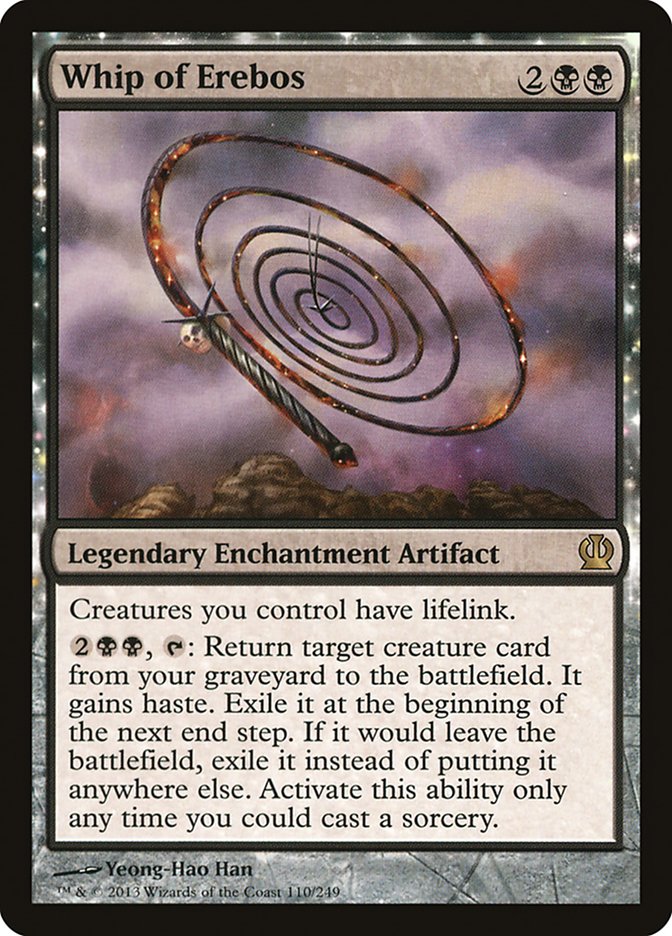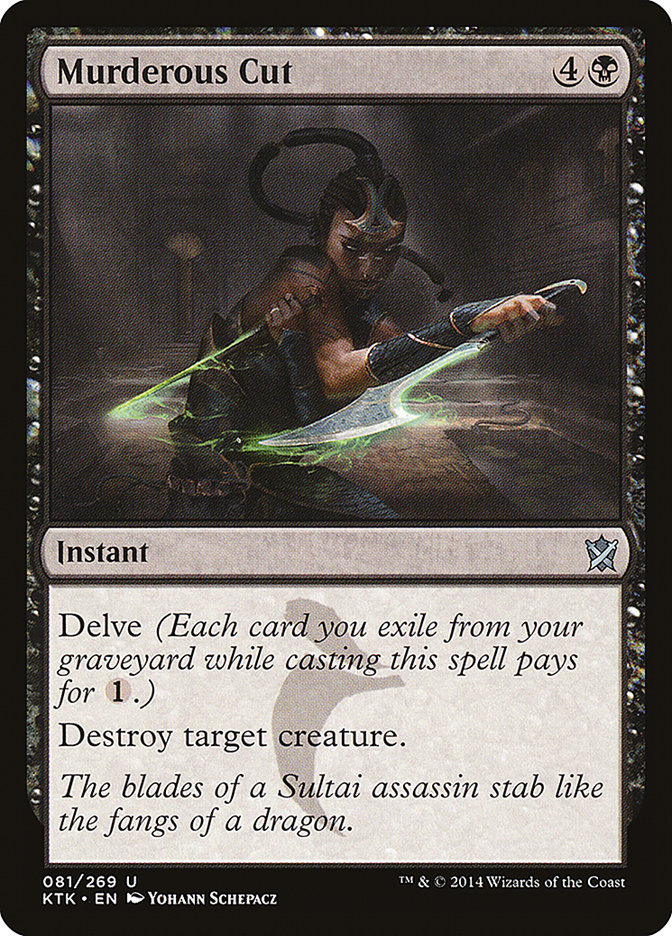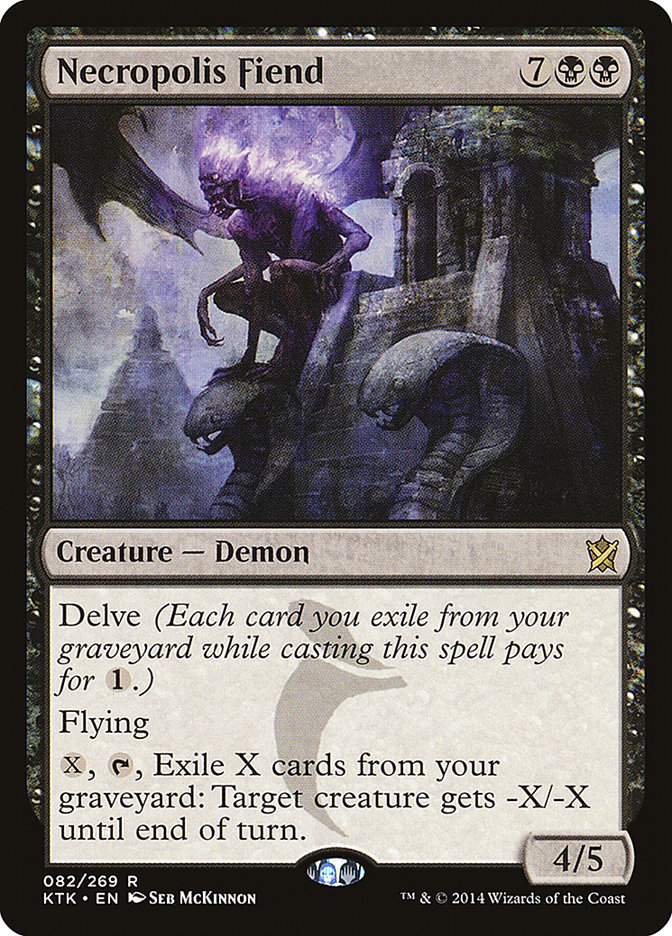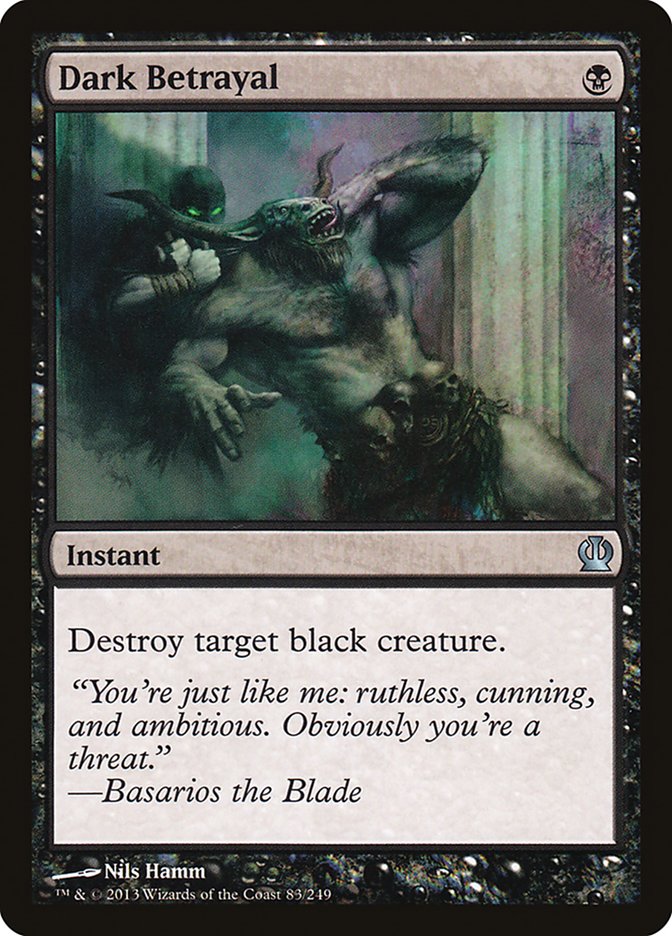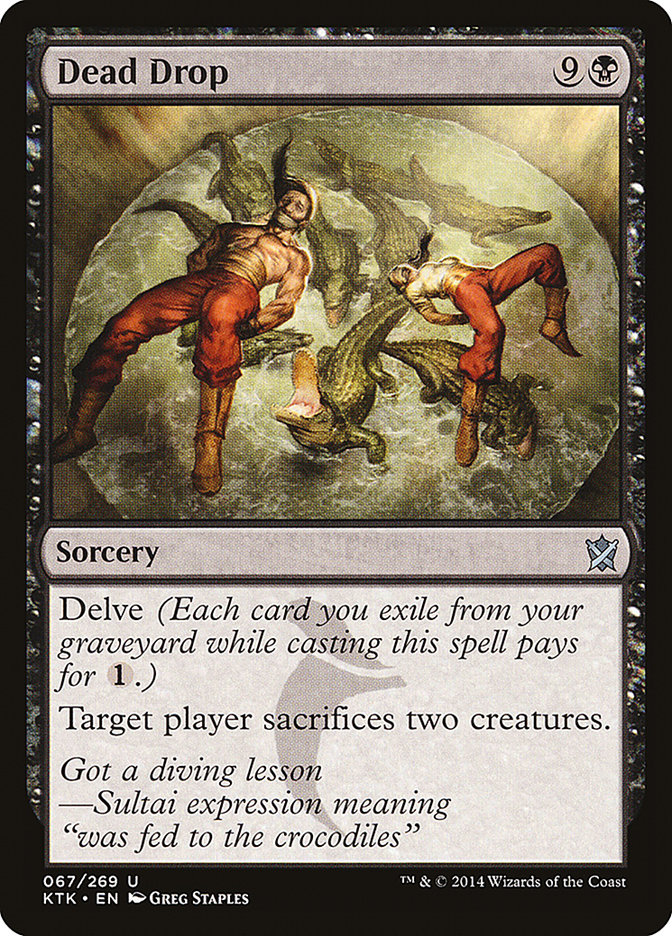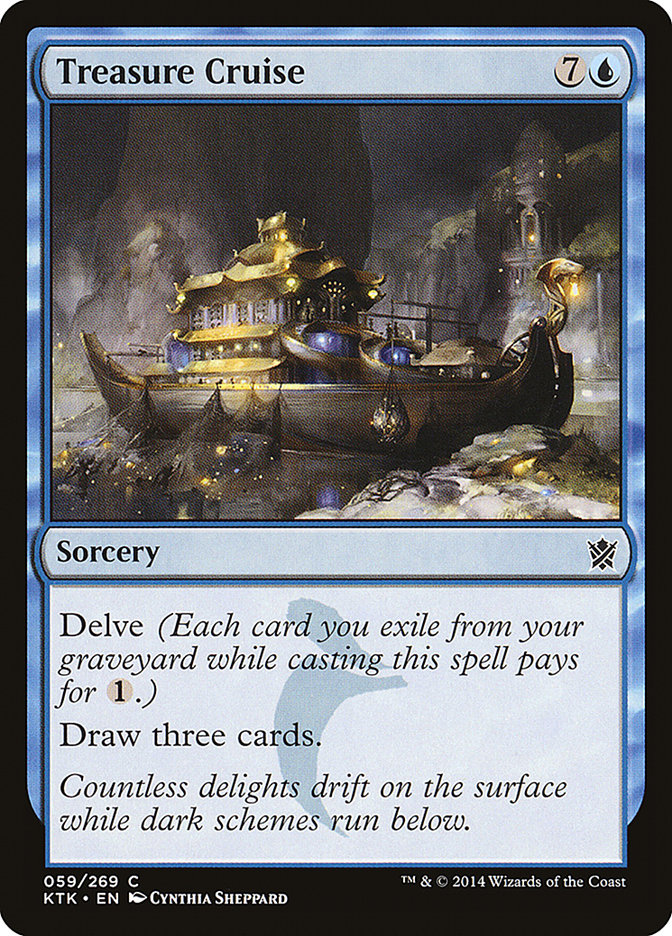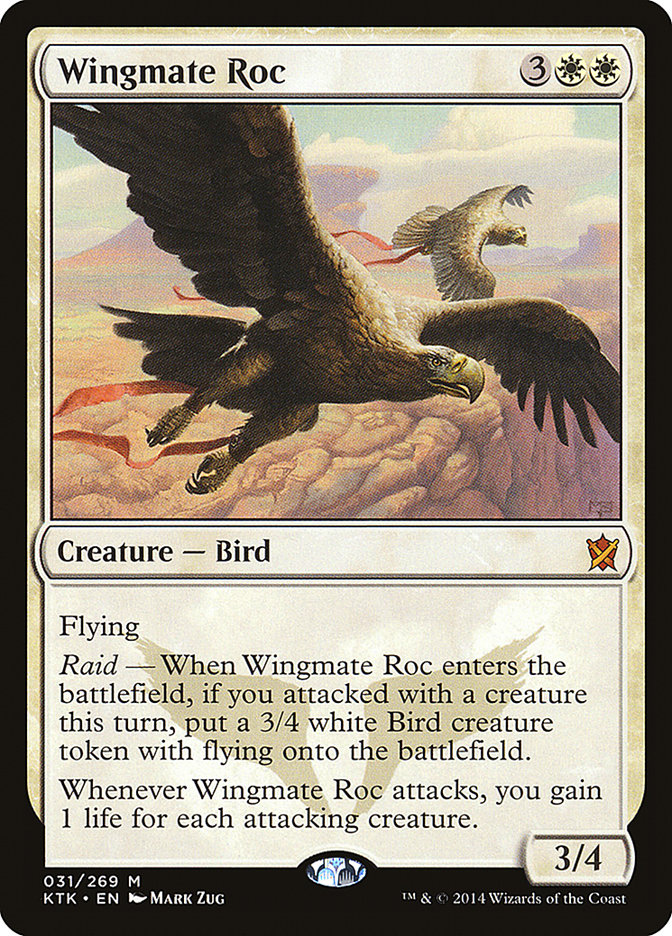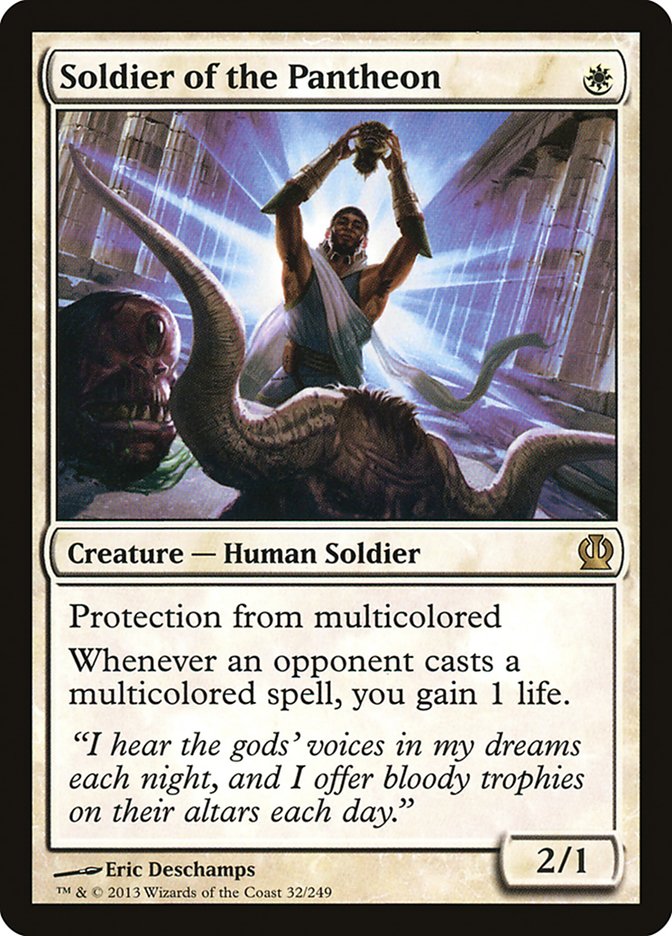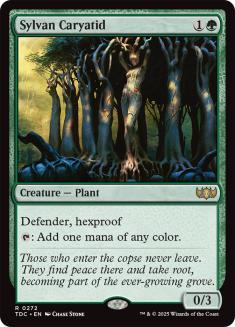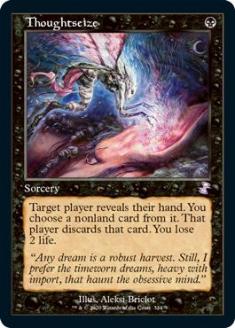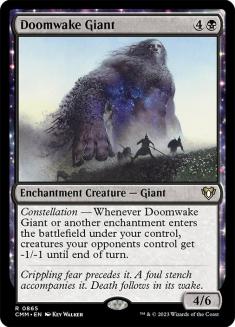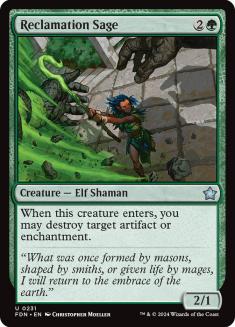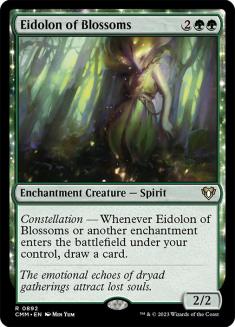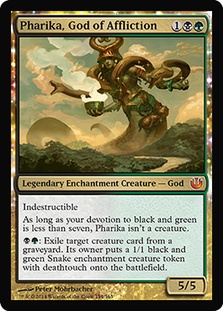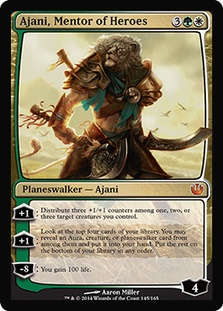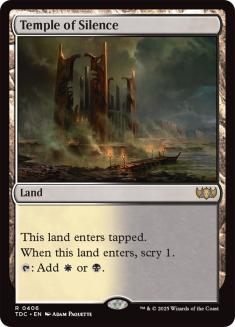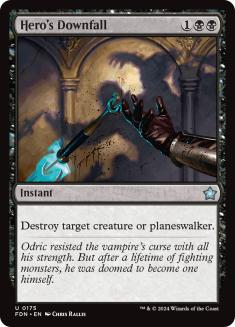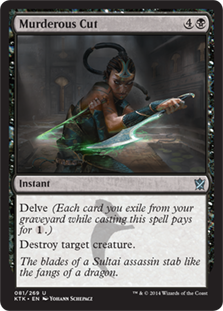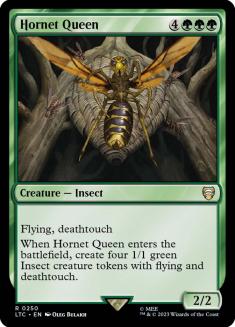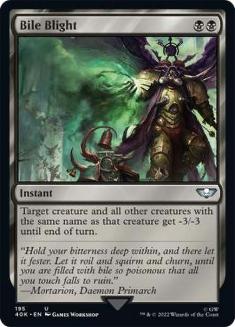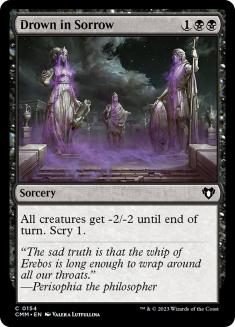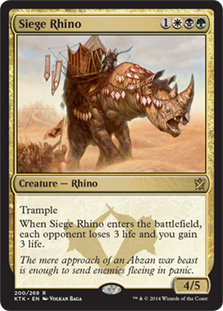Whip of Erebos has taken over Standard.
Since Standard has a clear public enemy #1, everyone is taking drastic measures to ensure they can compete with the best deck. Back to Nature, Erase, and
Anafenza, the Foremost are cards that are becoming increasingly more popular, and some are getting played in maindecks!
When you start seeing things like Back to Nature show up in sideboards, you have a choice to make: either you realize that some sort of Whip of Erebos deck
is likely the best deck in Standard (in a vacuum at least) and figure out how to beat the hate, or you play a deck you think is good against it.
For the Whip players out there, it might be time to get creative.
I’ve certainly seen my share of Erases, Back to Natures, and Anafenza, the Foremosts, but I don’t think it’s time to give up. Instead, I think we need to
take a step back, examine what makes the Whip decks great in Standard, and see if we can keep those traits without slamming head first into our opponents’
sideboard cards. To make matters worse, Abzan Aggro is seeing a resurgence. They have all the hate, removal, and perfect threats to fight Whip decks —
It’s basically the nightmare matchup.
In order to figure out whether we should adapt to the hate or move on, we need to question why we might be playing Whip decks in the first place.
Why Should I Play A Deck With Whip Of Erebos?
If you think you know why Whip of Erebos decks exist in the first place, feel free to skip this part. It won’t have “new” information, but it’s
important to understand everything that’s at work here.
A typical Whip deck looks like this:
4 powerful four-drop
X removal spells
Y ways to utilize your graveyard / late game threats
Z cards that suit your purposes for the metagame
24 land
The Caryatid + Courser duo has been talked about ad nauseam, and that core gets even better when you add Siege Rhino. You have twelve creatures that are
incredible on defense, and they are all relatively cheap. Additionally, Sylvan Caryatid fixes your mana and accelerates you; Courser of Kruphix gives you
card advantage, some additional life, and a little bit of card selection; and Siege Rhino gives you a huge life buffer and a reasonable threat.
Each of these cards has a unique roll, helps you stabilize early, allows you to turn the corner quickly, and gets you set up for the lategame. Having
access to that sort of power and flexibility is what makes green the best color in Standard.
Why do we even bother with Whip of Erebos though?
Standard has this interesting dilemma where there aren’t many good two-drops. This leads to a format where you don’t necessarily need a two-drop to compete
because no one else really has them either. We’re generally not under a ton of pressure in the earlygame and can afford to durdle around a bit trying to
set up.
What we are interested in is some cheap interaction. We may not need it early, but toward the middle of the game, we want to be using our mana as
effectively as possible. For example, if we play a Siege Rhino and then they play a Siege Rhino, the best case scenario for us would be to kill it and add
another threat to the table.
If our deck consists of a pile of Hero’s Downfalls and Abzan Charms, we aren’t going to be able to pull ahead. That’s not necessarily the worst scenario,
but if we’re never going to have a sequence that allows us to get ahead in that scenario, we are committed to playing a long game. We might not draw the
right tools for that job or our opponent’s deck might be better configured to win that fight than ours.
There are too many variables, and it’s often best if we are being proactive and putting pressure on our opponent.
Additionally, if they play a Siege Rhino, we play a Siege Rhino, and they have a removal spell and another threat, we basically have no way to catch back
up. If we are locked into playing only one spell per turn in the earlygame, that is incredibly exploitable.
This is all a roundabout way of saying we should play with Murderous Cut.
It has the potential to be the cheapest removal spell out there, and that’s an amazing tool to have at our disposal. We have to do a little extra work to
make it happen, but it’s work we shouldn’t mind doing in the first place. Killing stuff, cracking fetchlands, and Thoughtseizeing them is all part of the
gameplan anyway.
The card that bridges the gap because “Murderous Cut is sometimes one mana” and “Murderous Cut is almost always one mana” is Satyr Wayfinder. It can block
a token, Foundry Street Denizen, double block a Goblin Rabblemaster, or protect a planeswalker. It also fixes your mana and puts things in your graveyard
to be used later.
Sometimes it’s for Murderous Cut, but maybe we should play some additional graveyard stuff to help go long against other midrange decks. Whip of Erebos is
clearly great at doing that, plus it gives us some much needed lifelink against Goblin Rabblemaster and friends. What should we be Whipping back though?
“Reanimator” is a misnomer. Hornet Queen sees play because it’s perfectly castable and, for a time, was the best stopper for things like Stormbreath
Dragon, Butcher of the Horde, and Wingmate Roc. It also attacked planeswalkers. Overall, it was kind of like casting Upheaval, because after it hit the
battlefield, your opponent’s cards didn’t really matter anymore.
Hornet Queen is a helluva card, but that doesn’t mean our deck would be any better if we were just hellbent on putting the card into play. In fact, by not
focusing on being a normal midrange deck first, there would be several boardstates where Hornet Queen wouldn’t be good enough to save you.
Whip of Erebos is a great card, Hornet Queen is a great card, Murderous Cut is a great card, and Satyr Wayfinder ties it all together. If you go too hard
in one direction, you lose the ability to play the same game as Abzan Midrange, and therefore, become a worse deck as a whole. This deck isn’t focusing on
reanimating something, nor should it. Sometimes you Whip a Hornet Queen on turn 5 and that’s great, but it shouldn’t be your Plan A.
“Why not Bitter Revelation over Read the Bones?”
“Why not See the Unwritten to fill your graveyard and find a bunch of Hornet Queens or Doomwake Giants?”
“Why not Ashen Rider?”
“Why not Skybind?”
These questions all represent a fundamental misunderstanding of what the deck is trying to do. You should be a midrange deck first and foremost, which this
deck is great at doing. The graveyard stuff gives you an outlet to use your excess mana every single turn, but that doesn’t mean you should focus on it.
You have great mana, lots of card advantage, Siege Rhino playing offense and defense, Whip of Erebos to put you out of burn range and grind opponents out,
Doomwake Giant to clear away cluttered boardstates, and Hornet Queen to provide the ultimate brick wall.
This deck basically has it all.
So which version are we supposed to play?
Creatures (24)
- 2 Hornet Queen
- 4 Sylvan Caryatid
- 4 Courser of Kruphix
- 4 Satyr Wayfinder
- 2 Doomwake Giant
- 2 Pharika, God of Affliction
- 1 Soul of Innistrad
- 1 Reclamation Sage
- 4 Sidisi, Brood Tyrant
Lands (24)
Spells (12)
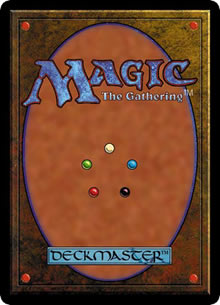
This is certainly the flavor of the week. It won the World Championships and it won the Players’ Championship, so it’s no surprise that people are picking
it up. I even played it at a local 4K last weekend to a Top 8 finish. I did run up against Abzan Aggro in the swiss and got thoroughly demolished. My
sideboard was ill-prepared for the matchup, and that deck is indeed quite good against Whip decks.
Sultai sets itself apart from the other Whip of Erebos decks by being able to utilize their graveyard better thanks to Sidisi, Brood Tyrant. Cards like
Soul of Innistrad are exactly fine in the Abzan and Constellation builds, but become insane in the Sultai version because you are milling yourself early
and often. This gives the deck a real identity and makes the Abzan deck look and feel scattered.
Creatures (25)
- 2 Hornet Queen
- 4 Sylvan Caryatid
- 4 Courser of Kruphix
- 4 Satyr Wayfinder
- 2 Eidolon of Blossoms
- 3 Doomwake Giant
- 2 Reclamation Sage
- 4 Siege Rhino
Lands (24)
Spells (11)

This was my personal favorite for a while. Towards the end of my run with it, I had pulled pieces from similar archetypes and integrated them into my own,
all to great success. As I mentioned earlier, I’ve been giving Sultai a try, but I think I’m ready to return to Siege Rhino.
Given that the deck needs a new, less enchantment reliant sideboard plan, I think Abzan is the way to go because I think it has the best tools to
facilitate those types of plans. It doesn’t do the graveyard thing as hard as Sultai does, but that might actually be a good thing because cards like
Anafenza aren’t nearly as threatening.
Creatures (23)
- 2 Hornet Queen
- 4 Sylvan Caryatid
- 4 Courser of Kruphix
- 4 Satyr Wayfinder
- 4 Eidolon of Blossoms
- 3 Doomwake Giant
- 2 Pharika, God of Affliction
Lands (23)
Spells (14)

Let’s be real, Reid’s and Gerard’s decks are constellation-based, not reanimator-based. The only real reason they are Sultai is for a few cards in the 75,
which is a big distinction from the Sidisi, Brood Tyrant builds. Eidolon of Blossoms is amazing in the mirrors and any sort of control deck, but having it
instead of one of the hard hitting wedge four-drops means you’re not really putting them under any pressure early.
If you expect more mirrors or control decks than anything, feel free to sleeve up mono enchantments, but if the field is normal, it will probably have some
Back to Natures in it. In that case, I’d rather my four-drop be something that can potentially power through sideboard hate, like Siege Rhino or Sidisi,
Brood Tyrant.
Going Forward
Whip decks have a clear target on their head at the moment, and rightfully so. It might be beneficial to abandon ship, at least for a little while, but I
think it might be more beneficial to solve the problems. If your opponent loads up on Back to Nature and you have a sideboard plan that makes that card
useless, you might be in a better position than if you were playing a different deck entirely.
They might over-sideboard against you or they might keep a speculative hand because it contains some sideboard cards they think really help them in the
matchup. If you end up making those blank, maybe by boarding out most of your enchantments and bringing in planeswalkers, you might win automatically.
So what’s the best way to go about doing that?
Well, we’ve got some options…
I’m not super excited about this, but it basically does what we want. It blocks Anafenza, the Foremost and Wingmate Roc, gives us a way to use the
graveyard, and can potentially kill other threats. That said, the Abzan Aggro deck plays a lot of removal, and I don’t think we’ll be casting many of these
per game.
If it sticks, I’d be pretty happy, but I don’t expect that to be the case.
This one might be reasonable since the plan post-board is to be a little more controlling with some card advantage. If we were playing Abzan, I’d want some
Glare of Heresies a little more than I’d want Dark Betrayal, so I’m not sure Dark Betrayal would even make the cut. In Sidisi-based Sultai decks, it might
be a great role player.
This one is pretty nice. I originally added them to my sideboard for W/U Heroic, but they ended up being quite nice against Abzan Aggro as well. You can’t
cast many ten-drop delve cards against a deck with Anafenza, but even at four mana, the card was powerful. It didn’t solve all the issues, but it made me
feel like it could be part of a plan that did.
The answer to everything it seems. If they are trying to grind us out, clearly drawing some extra cards will help. Like Dead Drop, it might get hosed
slightly by Anafenza, but you shouldn’t be planning on casting multiples per game anyway.
What was it I said earlier about wanting to play this card representing a misunderstanding of the how the deck works? Well, if you’re using this to try and
fill your graveyard and/or find a pair of ten-drop monsters, you’re probably doing it wrong. However, if you’re using it because it’s something to do with
your excess mana in the lategame, and their hate cards are preventing you from doing the whole Whip of Erebos thing, you might be onto something.
After all, cards have more than one use.
This would be a great card against them if they didn’t have their own to entirely brick wall you. Still, I’m not sure if we can actually do better.
This holds down the fort against a lot of their creatures, but you’ll never want to play out multiples into Bile Blight. Overall, it’s probably quite good
against them, but can’t really accomplish what you want it to.
***
In general, I think the best way to sideboard against the hate would be to shave on enchantments and board in some other difficult to kill threat, like a
planeswalker. Abzan has stuff like Sorin, Solemn Visitor and Elspeth, Sun’s Champion, but Sultai has Ashiok, Nightmare Weaver and Kiora, the Crashing Wave.
In the creature department, Abzan fares a little better, but Sultai has a powerful card drawer in Treasure Cruise.
Overall, I think Abzan has the slightly stronger plan, simply because you have Siege Rhino instead of Sidisi, Brood Tyrant. You can also play your own
Anafenza, the Foremost to block against Abzan Aggro and to hate on mirror matches.
I don’t have anything set in stone as of yet, but I should within the next couple weeks. In the meantime, feel free to experiment on your own!
How The Hell Do I Sideboard With These Whip Decks?
Sideboarding with this deck, perhaps more than with any other I’ve seen, requires an intimate knowledge of how the deck operates and what pieces you need
in what matchups. With popular decks like Abzan, Mardu, and Jeskai all varying wildly on their compositions, following a sideboarding guide is going to
lead to disaster when you sideboard against Mardu expecting End Hostilities and they show you Hushwing Gryff instead.
I can provide skeletons for sideboarding guides, but they should never be hard and fast rules.
Creatures (25)
- 2 Hornet Queen
- 4 Sylvan Caryatid
- 4 Courser of Kruphix
- 4 Satyr Wayfinder
- 2 Eidolon of Blossoms
- 3 Doomwake Giant
- 2 Reclamation Sage
- 4 Siege Rhino
Lands (24)
Spells (11)

Using this decklist, I would sideboard something like this:
VS Abzan Midrange
Out:
In:
This matchup is grindy so you don’t want Sylvan Caryatids or Thoughtseizes in your deck because they are dead draws in the mid to lategame.
VS Jeskai Tokens
Out:
In:
This matchup can be kind of grindy. You want some Eidolon of Blossoms, but not all of them because they are pretty slow and not great with your Drown in
Sorrows.
Keeping Jeskai Ascendancy off the table is priority number one, as you can defeat them easily if they don’t have it. Thoughtseize is fine here, but not
great. You do want additional ways to snipe Ascendancy, snipe Treasure Cruise, and play around Disdainful Stroke though.
VS Sultai/Abzan Reanimator
Out:
In:
Again, these games are grindy, so you don’t want to be drawing a bunch of Thoughtseizes in the midgame. Keeping in Sylvan Caryatid is also a risk, but with
all the Eidolons and Ajanis, you need the acceleration. Hornet Queen comes out because it’s poor against their Doomwake Giants.
***
That doesn’t cover every matchup, but the templates provided should help you figure out what to do in similar matchups.
How Do You Beat The Mirror?
With the above decklist, I like my sideboard plan of more card drawing to overwhelm them, which is basically what the Constellation decks get to do in game
1. Since then, I’ve been playing a lot with Sultai featuring two maindeck Pharika, God of Afflictions, and can safely say that is the best card for the
mirror match.
The mirror is incredibly volatile. Sometimes they run away with the game thanks to an early Siege Rhino, Eidolon of Blossoms, or Sidisi, Brood Tyrant, and
sometimes the game goes super long and you’ll lose to a card like Soul of Innistrad. Because of that, it’s best to not over-sideboard against one plan,
lest you risk being weak against a different side of the matchup. For example, you can load up on ways to kill Whip of Erebos, but that doesn’t really
matter if they play Ashiok, Nightmare Weaver or Pharika, God of Affliction.
Because of that, you want cards that are good in most, if not all, of the various situations you might find yourself in. Ways to gain card advantage and
unique ways to pressure your opponent are valuable, which is why Pharika and the planeswalkers are so powerful. Ideally, I’d go relatively hard on Ashiok
and Pharika while still trying to have answers for general threats. For this reason, Hero’s Downfall and Utter End tend to be much more important than
Murderous Cut.
Some have been saying that Erebos, God of the Dead is the nuts, but I don’t really believe it. It only fights against a specific part of their deck and is
no good if they’re getting aggressive. I can see spots in which it dominates, but most of the time, Pharika will be better.
How Should I Approach My Whip Matchup?
Once people figure out a good sideboard plan against the hate, it’s going to be difficult to beat them. Abzan Aggro is certainly a consideration, and I
think U/B Control with a lot of discard and Ashiok, Nightmare Weaver is quite good against Whip decks as well.
The best things you can do will probably be playing some cards that are good against them no matter what, such as Ashiok, Nightmare Weaver; Anafenza, the
Foremost; Wingmate Roc; Hushwing Gryff; and Sarkhan, the Dragonspeaker. Also, the tried and true method of fliers and sweepers will almost always be good.
As for me? I’m probably going to keep working on Whip of Erebos decks because, like I said, the deck just seems to have it all. I enjoy puzzles and I’m
certainly going to try and figure out how to fight the hate.

